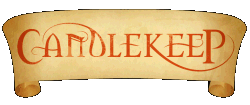| Author |
 Topic Topic  |
|
|
jordanz
Senior Scribe
  
556 Posts |
 Posted - 04 Apr 2012 : 06:55:05 Posted - 04 Apr 2012 : 06:55:05





|
influence equal to the lower planes? I always seem to come across corrupted "abysmal" versions of races, from elves to genasi to giants etc...
These are humanoids that over time, perhaps many centuries of dwelling in the lower planes , have taken on the primary aspects of the land and become more "fiendlike"...
I've noticed however, that there doesn't seem to be a commiserate number of "celestial" humanoid versions running around.
If a race of humanoids spent enough time wandering the upper planes I would expect for celestial versions to pop up but they seem to be nonexistent. Why is that?
Is it because is much rarer for a humanoid to chance upon a gate to the upper planes? Or perhaps the upper planes just dont that type of influence on it's non native inhabitants? Or perhaps they do exist but have yet to be encountered/detailed?
|
|
|
Ayrik
Great Reader
    

Canada
8027 Posts |
 Posted - 04 Apr 2012 : 07:45:19 Posted - 04 Apr 2012 : 07:45:19



|
First, celestials generally seek to avoid interacting with worldly affairs, they tend to use proxies and indirect methods whenever possible, they usually dislike revealing their celestial nature to lesser creatures. While fiends instead actively seek to sink their claws into the world any way possible, they encourage mortals (man and monster alike) to bridge the boundaries, they revel in displaying their power and dominance. If there's always more fiends than angels in the world, there'll always be more tieflings than aasimar.
Second, there are probably far more half-celestials and aasimar than we know. Just like their celestial parents, they often prefer for their actions to remain unseen and undetected. They might appear completely "normal" to all but the closest inspection, they can use some of their power to disguise themselves more convincingly. Many fiendspawn probably hide within anonymity as well, but I think fewer can get away with it because they usually visibly manifest the "worst" characteristics of their bloodlines, they would also be constantly driven to exert power over others.
2E Planescape had a fair number of celestial species. Many d20/OGL books expand the possibilities to ridiculous extremes.
Short answer:
Each edition of D&D was written with some very definite and very arbitrary ideas about devils and angels, the problem is that these implied and unspoken ideas were warped by each successive iteration - sometimes there is perfect cosmic symmetry, sometimes good prevails, sometimes evil. And badass biker cambions have always been more fun for the DM to play with than untouchably pure angelic minions. It seems like "good" creatures can expect a celestial afterlife determined by their faith and morals, then might be reborn as Einherjar or some similar sort of race; while "evil" creatures are expected to have their screaming souls dragged into flaming pits where they are (presumably) consumed by yet greater evils. |
[/Ayrik] |
 |
|
|
jordanz
Senior Scribe
  
556 Posts |
 Posted - 04 Apr 2012 : 15:57:38 Posted - 04 Apr 2012 : 15:57:38




|
quote:
Originally posted by Ayrik
First, celestials generally seek to avoid interacting with worldly affairs, they tend to use proxies and indirect methods whenever possible, they usually dislike revealing their celestial nature to lesser creatures. While fiends instead actively seek to sink their claws into the world any way possible, they encourage mortals (man and monster alike) to bridge the boundaries, they revel in displaying their power and dominance. If there's always more fiends than angels in the world, there'll always be more tieflings than aasimar.
Second, there are probably far more half-celestials and aasimar than we know. Just like their celestial parents, they often prefer for their actions to remain unseen and undetected. They might appear completely "normal" to all but the closest inspection, they can use some of their power to disguise themselves more convincingly. Many fiendspawn probably hide within anonymity as well, but I think fewer can get away with it because they usually visibly manifest the "worst" characteristics of their bloodlines, they would also be constantly driven to exert power over others.
2E Planescape had a fair number of celestial species. Many d20/OGL books expand the possibilities to ridiculous extremes.
Short answer:
Each edition of D&D was written with some very definite and very arbitrary ideas about devils and angels, the problem is that these implied and unspoken ideas were warped by each successive iteration - sometimes there is perfect cosmic symmetry, sometimes good prevails, sometimes evil. And badass biker cambions have always been more fun for the DM to play with than untouchably pure angelic minions. It seems like "good" creatures can expect a celestial afterlife determined by their faith and morals, then might be reborn as Einherjar or some similar sort of race; while "evil" creatures are expected to have their screaming souls dragged into flaming pits where they are (presumably) consumed by yet greater evils.
Thanks Ayrik but I'm not talking about the inhabitants or spawn of inhabitants, I'm talking the influence emitted from the upper planes themselves. I'm talking about races of beings not native that have been transformed simply by dwelling in the outer planes long enough.
There are all sorts of varieties of abysmal humanoids that are a product of abysmal taint (and not necessarily physical union), but I don't see too much of that going on in the upper planes. Heck even limbo has the githyanki who were supposedly originally human. |
 |
|
| |
 Topic Topic  |
|
|
|

